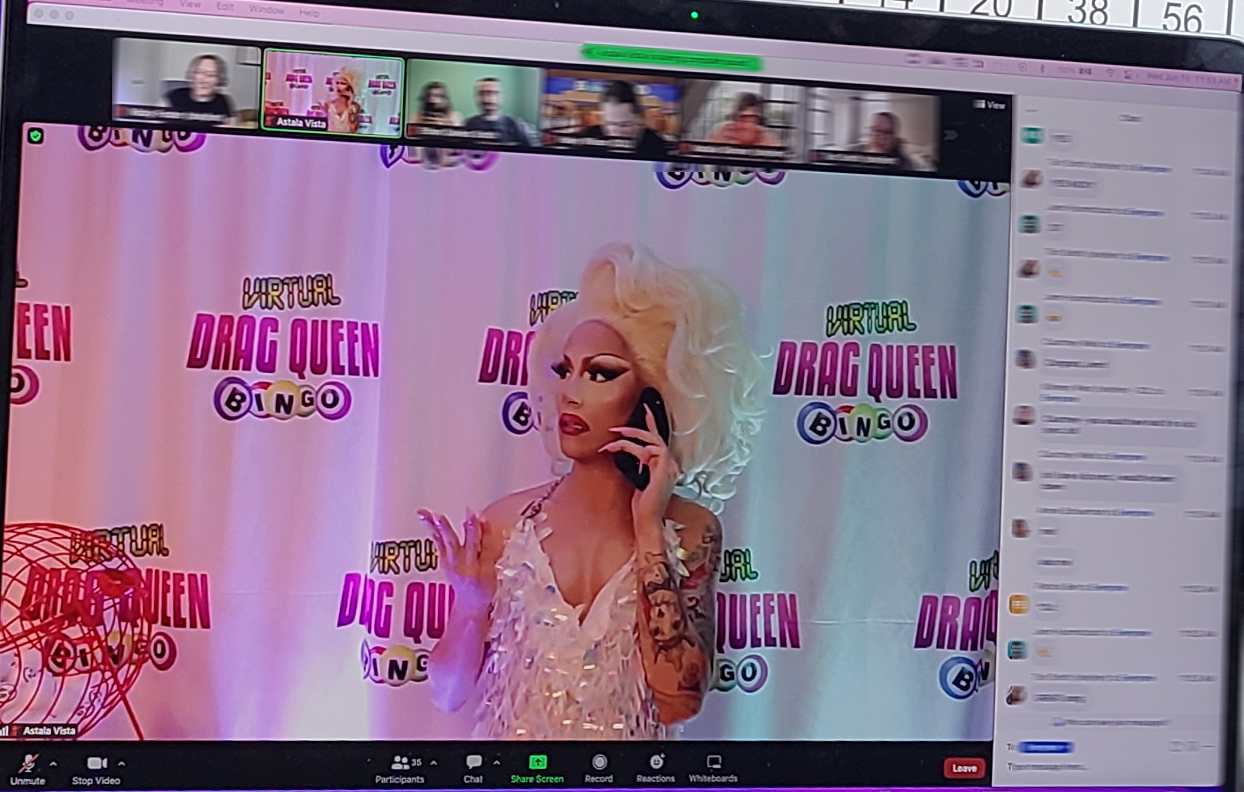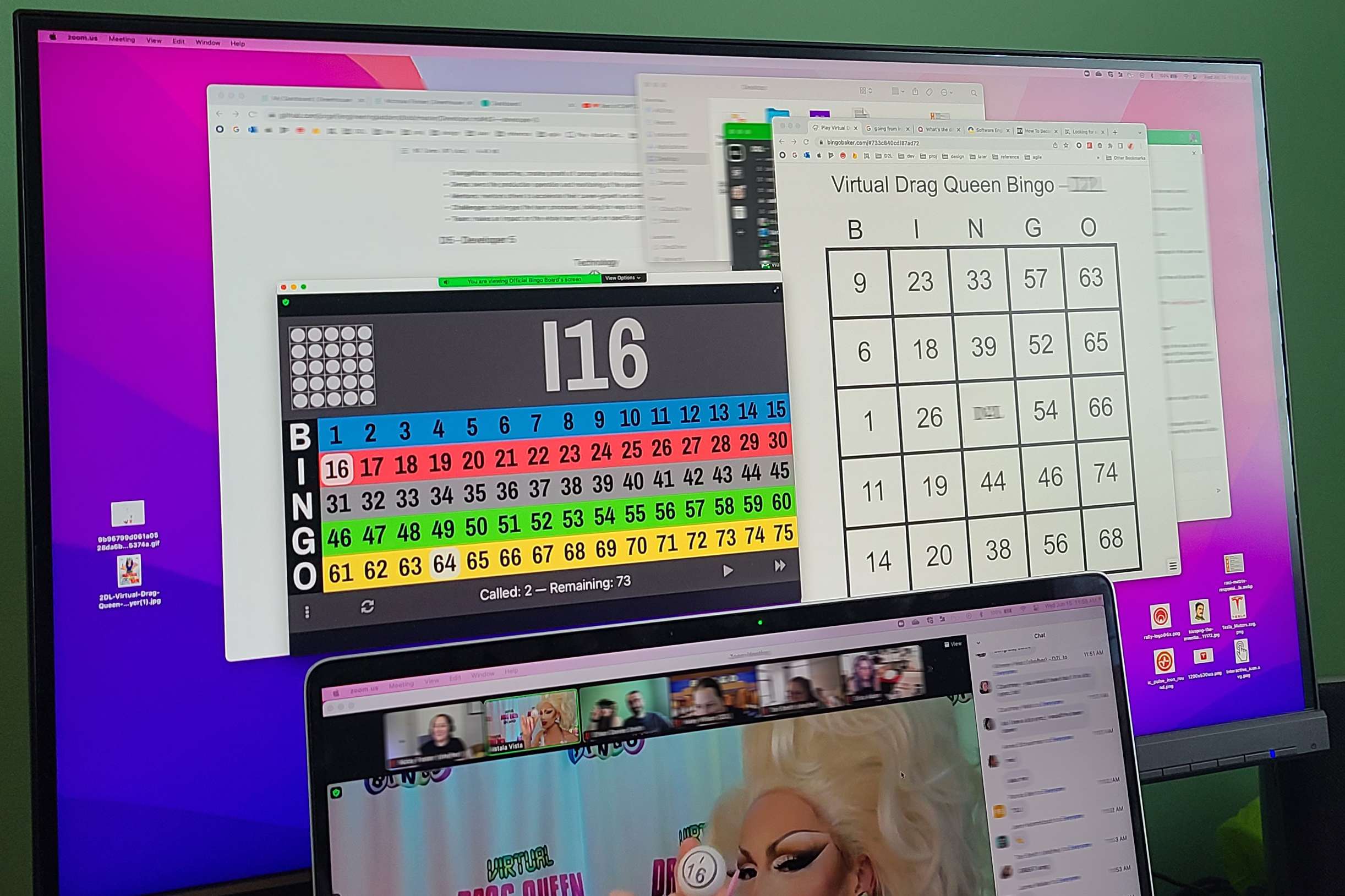To celebrate pride month, my husband Ethan’s workplace Desire2Learn organized virtual Drag Queen BINGO hosted by the fabulous Astala Vista. Even within the confines of a Zoom meeting, Astala Vista put on a great show!

To keep things interesting (and I’m sure to reduce the odds of winning to keep the show going), different BINGO patterns besides the traditional “5 across” BINGO were used. This included a “4 corners” BINGO and a “cover-all” BINGO. To obtain a cover-all BINGO, all numbers on a traditional 5 by 5 BINGO card must be called (noting that of the 25 spaces on the card, 1 is a free space).
Up until this point, probability had not entered the discussion between my husband and I. However, with the cover-all BINGO, Ethan began wondering how many draws it would take to call a cover-all BINGO.

I became quiet, and my husband thought he had perhaps annoyed me with all of his probability questions. In fact, I was thinking about how I could easily simulate the answer to his question (and the corresponding combinatorics answer)!
First, we need to randomly generate a BINGO card. A BINGO card features five columns, with five numbers each. The exception is the N column which features a FREE space, given to all players. The B column features the numbers 1 through 15, the I column 16 through 30, etc. The numbers in each column are drawn without replacement for each card.
